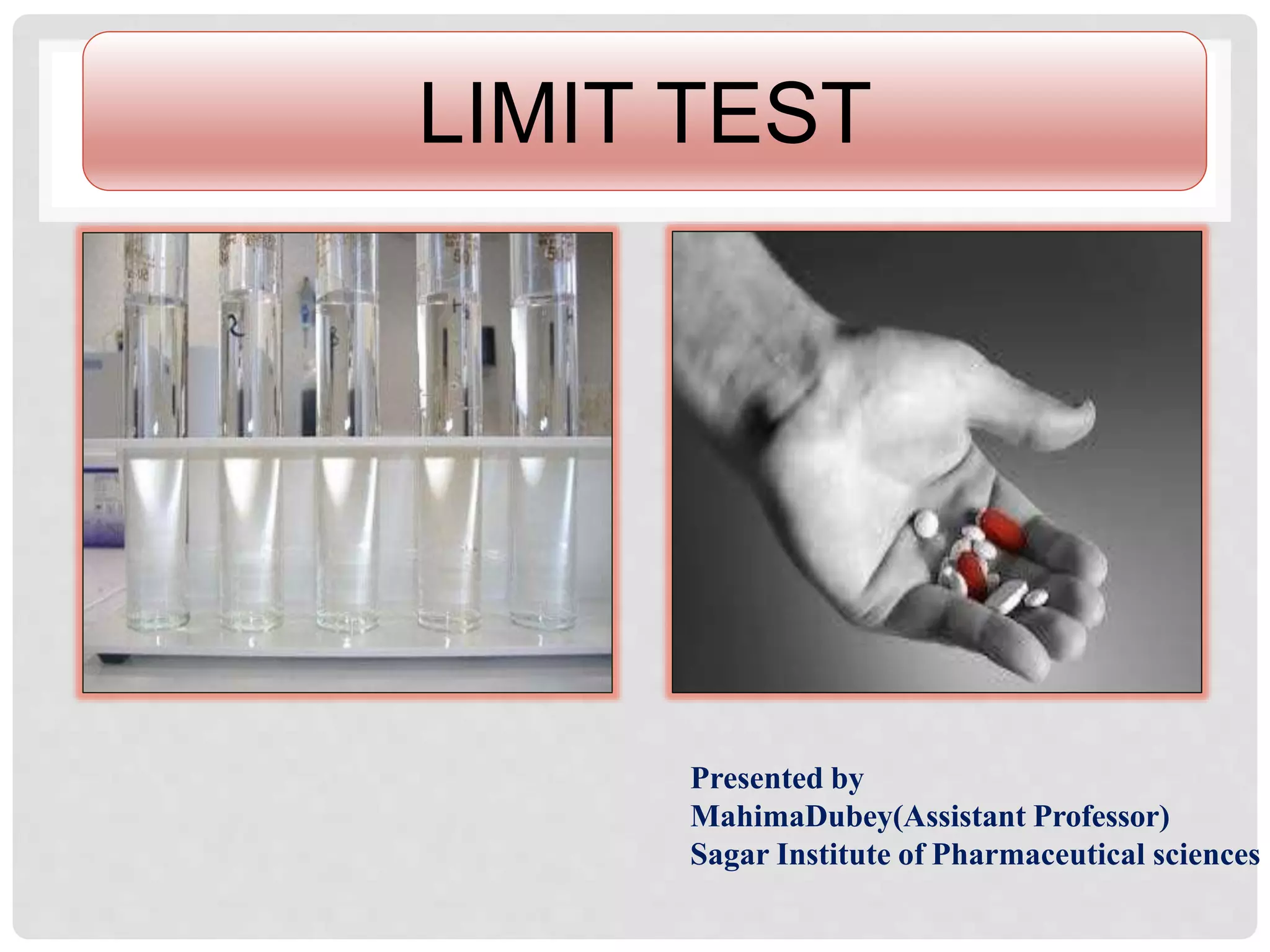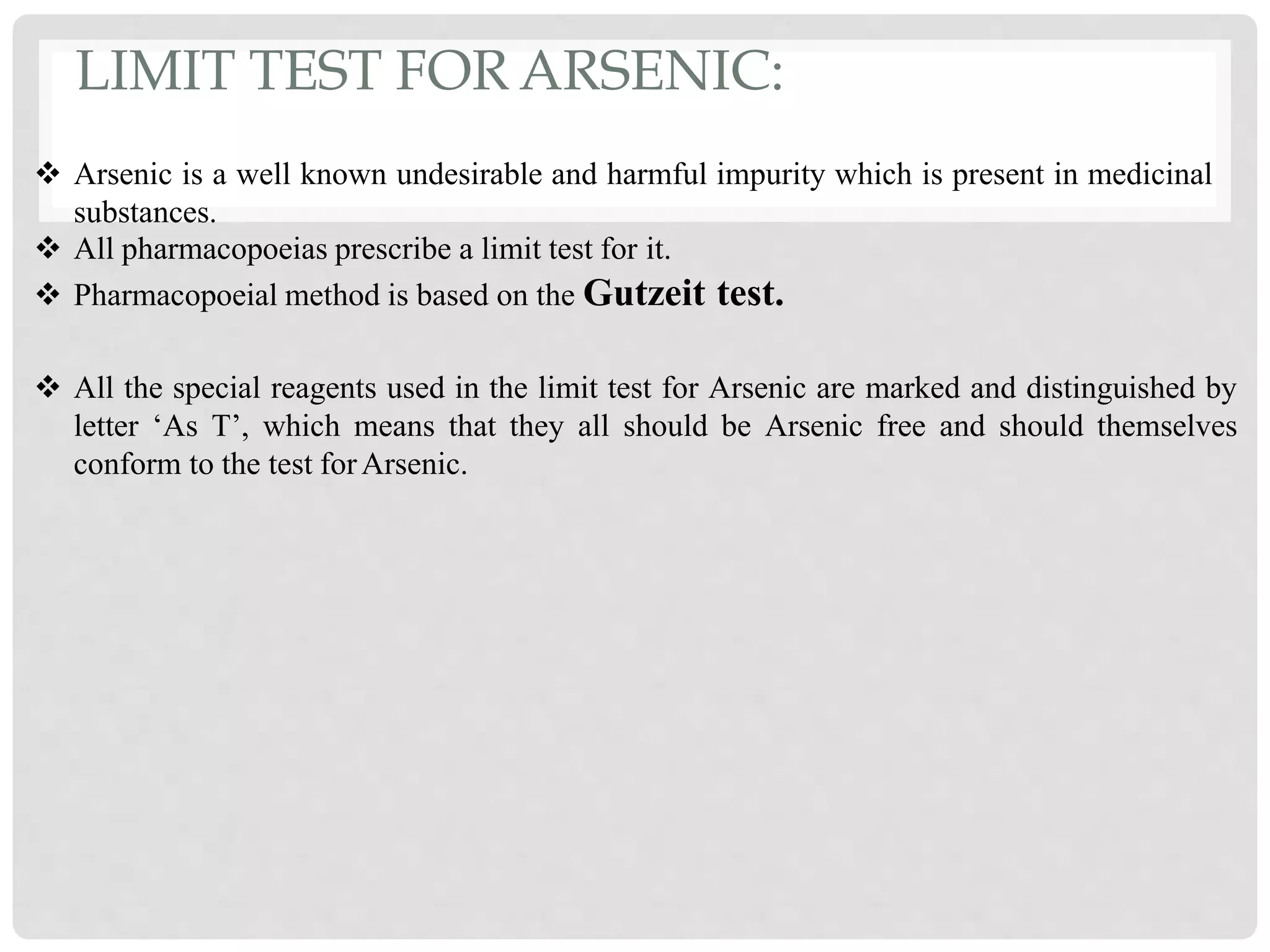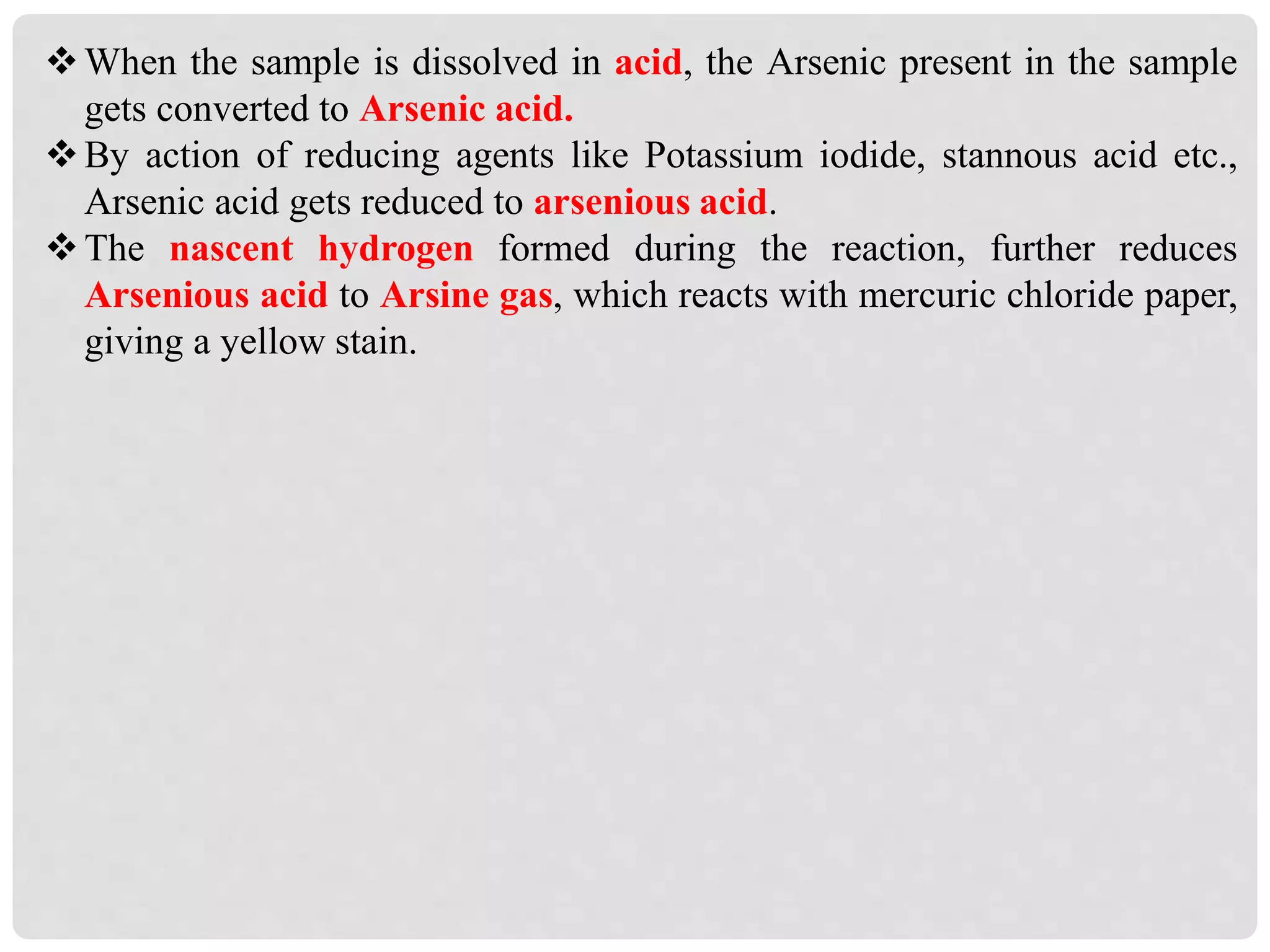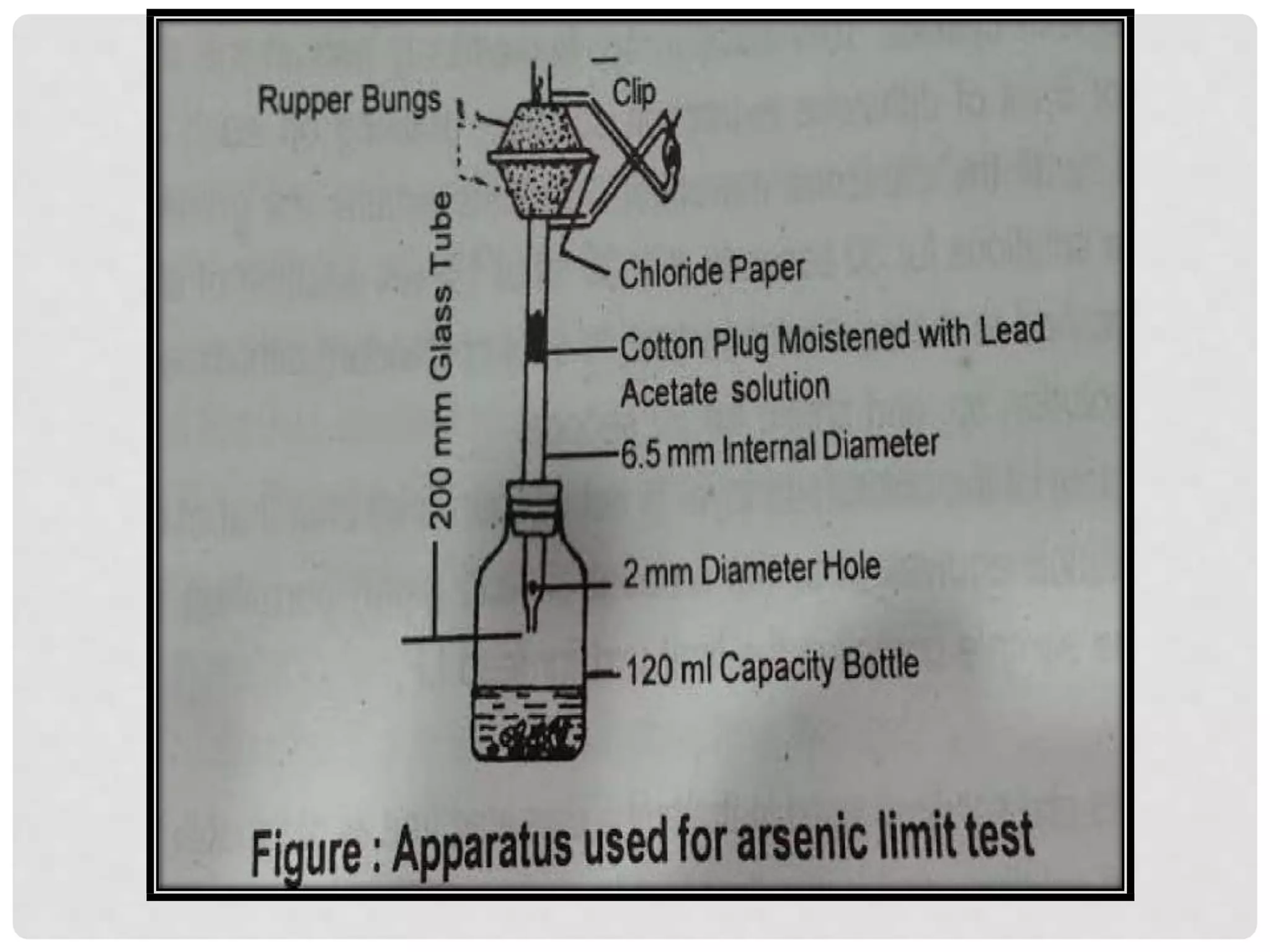The document describes limit tests for sulfate and arsenic conducted in pharmaceutical sciences. The sulfate test involves the reaction of soluble sulfate with barium chloride in an acidic solution, while the arsenic test uses a gutzeit method to detect arsenic gas using mercuric chloride paper. Both tests involve specific reagents and procedures to ensure accurate results, highlighting the importance of maintaining the purity of all testing materials.





![Principle:
Limit test of Arsenic is based on the reaction of arsenic gas with hydrogen ion to form
yellow stain on mercuric chloride paper in presence of reducing agents like
potassium iodide. It is also called as Gutzeit test and requires special apparatus.
Arsenic, present as arsenic acid (H3AsO4) in the sample is reduced to arsenious
acid (H3AsO3) by reducing agents like potassium iodide, stannous acid, zinc,
hydrochloric acid, etc. Arsenious acid is further reduced to arsine (gas) (AsH3)
by hydrogen and reacts with mercuric chloride paper to give a yellow stain.
Substance + dil HCl ------------------------- H3AsO4
(containsArsenic impurity) Arsenic acid
H3AsO4 +
Arsenic acid
H2SnO2 -------------------→ H3AsO3 +H2SnO3
Arsenious acid
H3AsO3 + 6[H] ---------------------→ AsH3 +3H2O
Arsenious acid nascent hydrogen Arsine gas
The depth of yellow stain on mercuric chloride paper will depend upon the
quantity of arsenic present in the sample.](https://image.slidesharecdn.com/limittest-sulphate-201118092807/75/Limit-test-sulphate-6-2048.jpg)




